What is ray tracing? Everything you need to know to raise your game
Ray tracing can make video games feel more immersive, but not all games have it
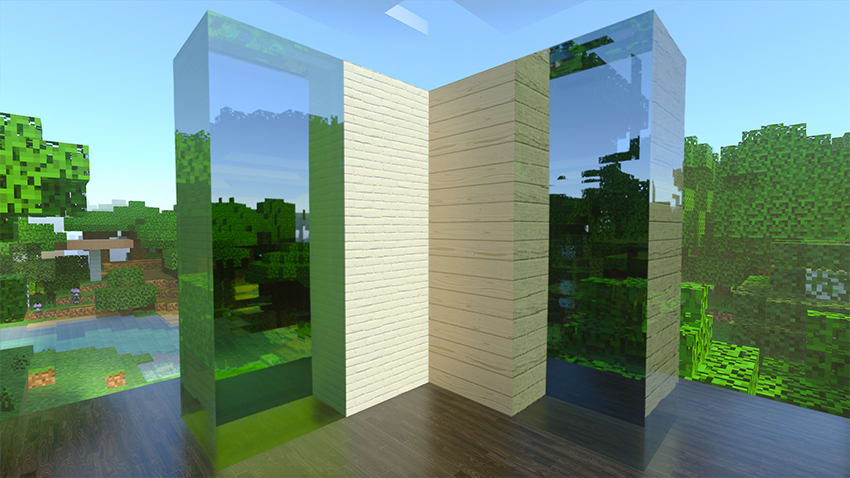 Credit:
Nvidia
Credit:
Nvidia
Products are chosen independently by our editors. Purchases made through our links may earn us a commission.
Even though ray tracing in video games has been around for a few years, it can still be a mystifying term, partially because it’s not a standard graphics option in all games. Additionally, the current two major players in the ray tracing space, Nvidia and AMD, both process these special lighting effects in different ways.
A realistic lighting enhancement, ray tracking is handled well by both Nvidia and AMD graphics cards, and there are enough games that incorporate the effect to warrant at least considering picking up a shiny new RTX 3080, especially if you love playing high-fidelity games like Cyberpunk 2077. Here’s everything you need to know about ray tracing.
What is ray tracing?
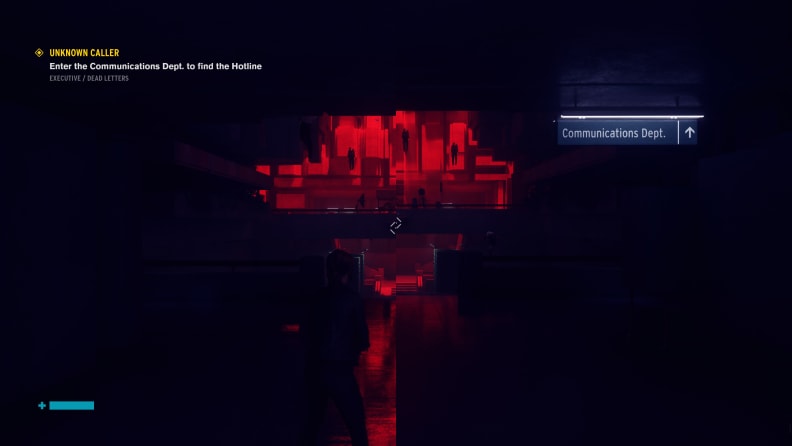
Control, from left to right: Ray tracing on, ray tracing off.
Imagine you’re playing a high-quality game and your character is standing by a crystal-clear lake on a sunny day. The lake stretches far and wide, and as you look across it you see your character’s surroundings reflected in the water. If it wasn’t for the ripples, you’d swear the lake was actually a mirror.
That’s ray tracing: super realistic lighting effects in video games rendered by a graphics card in real-time. Shadows are softer, certain surfaces are more reflective and detailed, neon lights pop with more intensity. There’s a wide variety of lighting effects ray tracing can handle: reflection, refraction, soft shadows, scattering, depth of field, motion blur, caustics, ambient occlusion, and dispersion phenomena. All are fancy names for the various ways light bounces off of and penetrates real objects inside and outside our homes. What ray tracing does is simulate all those optical effects.
Ray tracing has been around for a while in the film industry—if you’ve seen a Pixar movie, like Cars, you’ve seen ray tracing. But the special lighting effects have only been available in video games since the end of 2018, and even then the ratio of ray traced games compared to non-ray traced games is still wildly unbalanced. The technology is still catching on with game developers, and without speaking to the complexity of integrating ray tracing into a game, the graphics cards that can handle ray tracing at a reasonable frame rate are very expensive at the moment, albeit powerful.
Until Nvidia debuted the first ray tracing compatible graphics cards in 2018, ray tracing wasn’t suitable for real-time applications like video games because the GPUs couldn’t render the frames fast enough. But not only can modern GPUs process these really neat lighting effects now, some (like Nvidia’s RTX 3080 Ti) are also powerful enough to run high-fidelity games at 4K on a High or Ultra graphics preset while still outputting 60 fps or more.
Do all games have ray tracing?
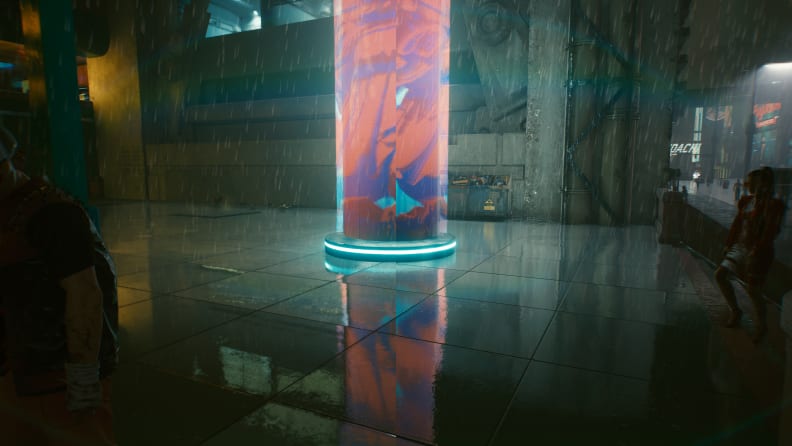
Cyberpunk 2077, from left to right: Ray tracing on, ray tracing off.
Unfortunately, no. As mentioned above, this is still a relatively new technology for gaming—but every month the list of ray tracing compatible games gets a little longer.
When ray tracing first hit graphics cards, there were less than ten titles that incorporated the technology. Now that both Nvidia and AMD have added ray tracing to all of their graphics cards (with Intel on the way), the technology is becoming more accessible to the average gamer. (Ignoring the ongoing GPU shortage, of course.) Even the PS5 and Xbox Series X have ray tracing!
It’s not just major video game titles with intense graphics like Cyberpunk 2077 that have ray tracing, either. Minecraft, Myst, and Lego: Builder's Journey are all games that incorporate the technology and can easily run on any system, high-end or budget. Sometimes it’s games like those that benefit the most from ray tracing because they are low-fidelity games, so they don’t push your system nearly as hard as major titles.
To make things more complicated, there are some ray tracing compatible games that only work with Nvidia graphics cards, like Wolfenstein: Youngblood . This is possibly due to agreements between Nvidia and the developer, but this a rare case; you can use a ray tracing compatible AMD GPU with all other ray tracing-enabled games we’ve encountered.
Our best advice is to check if the game you want supports ray racing on either system before you purchase it.
Why do some games look better with ray tracing than others?
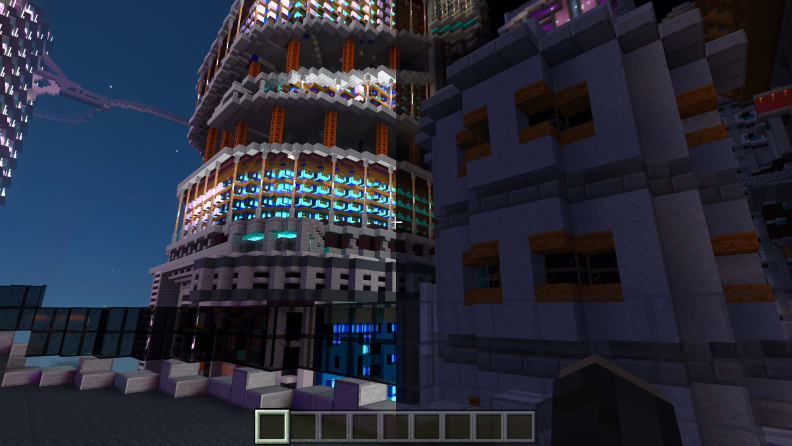
Minecraft, from left to right: Ray tracing on, ray tracing off
How good a game’s ray tracing looks in practice will depend on the individual ray tracing effects the developers incorporated into their game and how graphically demanding the game is overall.
A game like Battlefield V has few ray traced lighting effects, and that’s a big reason why it performs so well with ray tracing on, even with a lower end-GPU. Games that have optimized variable rate ray tracing also generally perform better, which Battlefield V also utilizes.
Variable rate ray tracing prioritizes certain ray traced areas of the game over others, so if there’s a piece of shiny metal on a sidewalk, variable rate ray tracing will make the shiny metal look extra shiny without adding effects to the sidewalk because flat concrete surfaces won’t benefit from the effect nearly as much. This helps increase the number of frames per second (fps) at which the GPU can render the gameplay.
Other games, like Control, go whole-hog on ray tracing effects, and there are plenty of surfaces and objects built into the game to show it off. But you can turn individual effects on and off.
Control has ray tracing settings for reflections, transparent reflections, indirect diffuse lighting, contact shadows, and debris. Turning the ray tracing preset to Medium enables ray tracing for reflections and transparent reflections while turning the same preset to High enables all five lighting effects. There is also a custom setting that lets you turn on or off whichever ray tracing settings you want. In contrast, Battlefield V only has one ray tracing setting for reflections, but you can adjust the intensity of that setting in addition to turning it on and off.
Some low-fidelity games, like Minecraft, have a single on/off switch for all ray tracing effects, but they can get away with it because the game isn’t demanding to begin with. That said, Minecraft looks like an entirely different game with ray tracing on!
Which company has better ray tracing: Nvidia or AMD?
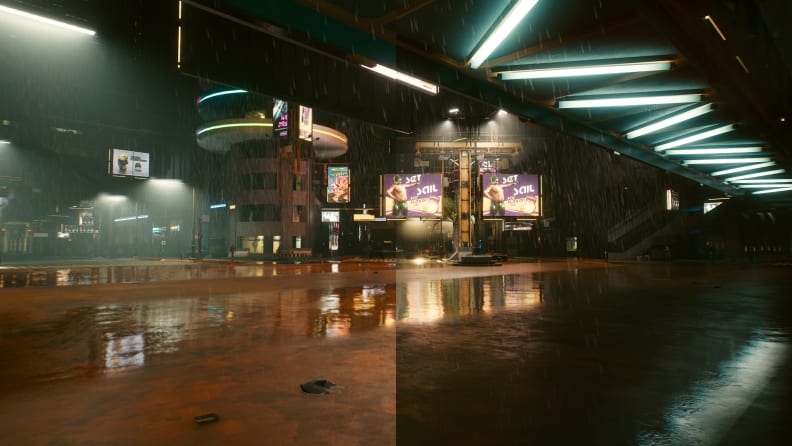
Cyberpunk 2077, from left to right: Ray tracing on, ray tracing off.
You might think that comparing the same scene in a game rendered with an Nvidia graphics card and then an AMD graphics card would tell you which is better, but there actually won’t be much visual difference between the two. The best way to answer this question is to look at how high of a frame rate each brand can output in the same game.
In our testing, we’ve found that Nvidia’s graphics cards crank out higher in-game frame rates with ray tracing turned on than AMD. Nvidia’s cards also consistently score higher than AMD’s cards in synthetic benchmarks, like 3D Mark’s ray tracing tests. That absolutely does not mean you can’t achieve the same or similar result with an AMD graphics card, but it does mean you might have to turn down the game’s graphics preset or lower the intensity of certain ray tracing effects.
That’s because each GPU maker incorporates ray tracing cores (the specific part of a graphics card that processes ray tracing effects) differently into their cards’ architecture. Nvidia’s graphics cards have what the company calls dedicated ray tracing cores, or RT cores, which help the company achieve higher frame rates than its competitor with ray tracing enabled.
When ray tracing is turned on and the main GPU cores are charged with rendering ray traced effects, the card passes the task to the stand-alone RT cores to handle all the complicated math it takes to calculate the exact trajectory of a ray traced lighting effect. This delegation of work makes cards like Nvidia’s RTX 30-series GPUs super efficient for ray tracing.
AMD combined its ray tracing cores (what it calls Ray Accelerators, or RAs) with its main GPU cores. Every main core has one ray tracing accelerator, so something like the RX 6800 XT, which has 72 CUs, also has 72 ray accelerators.
Additionally, the RAs are capable of processing one triangle intersection per clock, meaning they can calculate the intersection of a ray and a triangle in 3D with every electric pulse that goes through the GPU. It’s an extremely efficient way to render ray tracing effects without dedicated ray tracing cores, but it’s still not as fast as having dedicated RT cores.
For now, if you want the best possible ray tracing graphics and in-game frame rates, we recommend going with an Nvidia graphics card. But this technology is just getting started and we expect it to be commonplace among most video games in the next several years.
The product experts at Reviewed have all your shopping needs covered. Follow Reviewed on Facebook, Twitter, Instagram, TikTok, or Flipboard for the latest deals, product reviews, and more.


